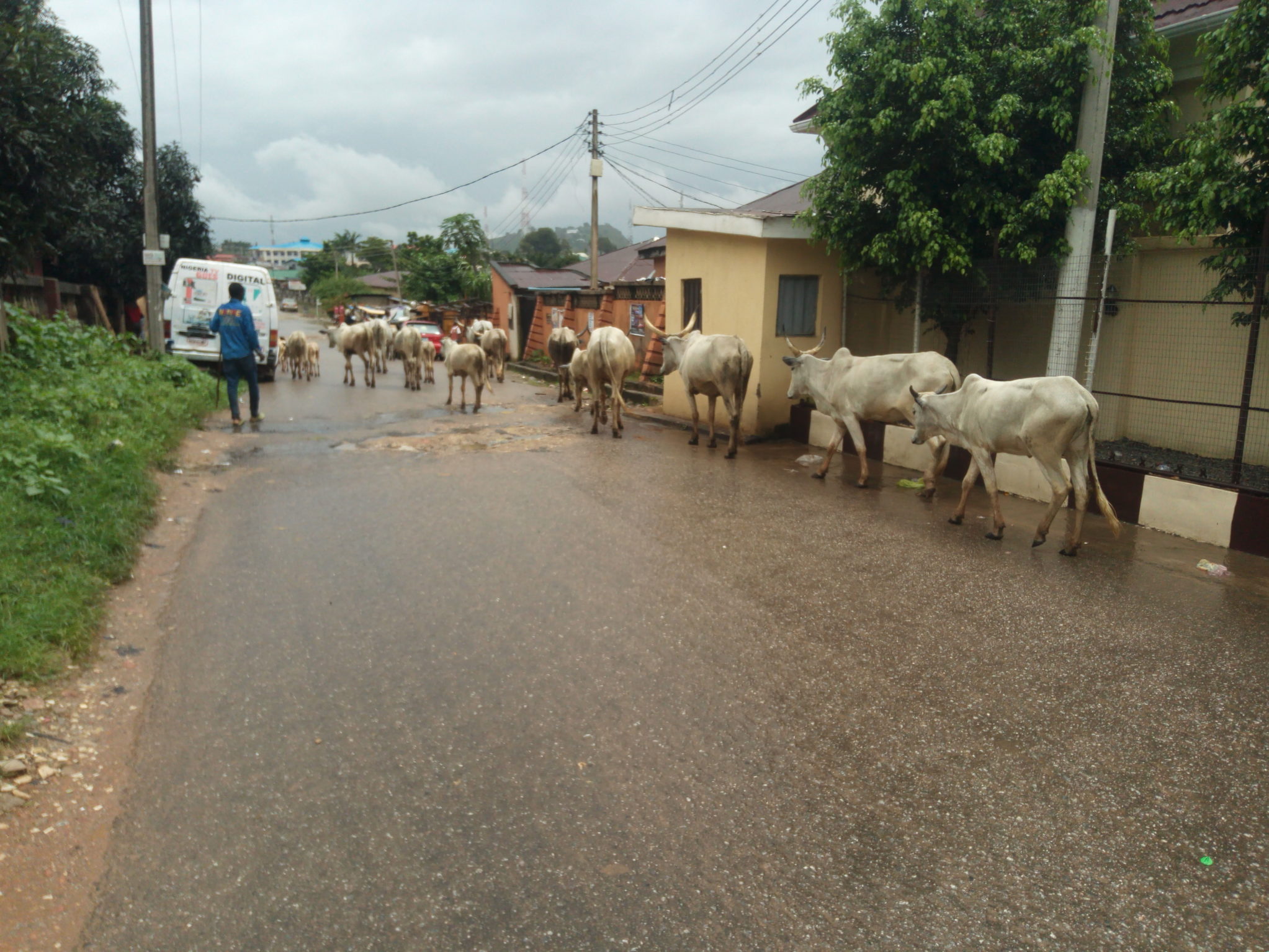Pidgin and creole emerged to serve trade, but what of their longer-term use and acceptance?
I lived in Sierra Leone’s capital, Freetown, my house had a collection of books on the shelves on one wall. There were copies of the Sierra Leonean government gazette, for my landlord had once run the national printing concern. There was also a Bible, but its title hung on the edge of intelligibility: Gud Yus fɔ Ɔlman. It was written in Sierra Leonean Krio—a creole, a kind of language formed when multiple tongues collide.
Krio is not the only linguistic blend in Africa. Such languages are politically significant on the continent. Yet creole and pidgin languages generate intense controversy. Michel DeGraff, a professor of linguistics at the Massachusetts Institute of Technology, says the topic is “rife with prejudices”. One reason is that creoles and pidgins embody, in linguistic form, the encounter between European and African culture.
According to the traditional theory, when groups of individuals with no common language interact with each other, usually for trade, an initial “contact pidgin” emerges. This vernacular cannot express ideas as complex as those which its users gloss in their respective native languages, and its grammar is scant. According to Joseph Opala, an American historian who spent much of his adult life in Sierra Leone, more than two languages must be involved if a pidgin is to emerge. With just two languages, one group chooses, or is forced, to learn the other’s.
During the initial period of European contact with West Africa, Portuguese, English, French and Scandinavian traders and slavers probed the coastline. Malaria kept most Europeans from penetrating inland, but their demands spurred an extensive trading network away from the coast. The Europeans never saw this system, but its African protagonists had to transect multiple other kingdoms and state-lets with whom they shared no language. So West African Pidgin English (WAPE) emerged, a colourful language in which Noah would be said not to have built an ark but an “Elder Dempster”, after the British shipping line that long served the West African coast.
In the traditional theory, the first, rough contact pidgin gradually coalescences into a lingua franca pidgin, whose lexis and grammar can convey any idea that the speaker’s native language can frame. The language of the economically dominant culture, in West Africa usually English, serves as the “lexifier”, providing most of the vocabulary, but not the grammar. Examining a comparable situation in Haiti, the anthropologist Suzanne Comhaire-Sylvain, in the 1930s, argued that the local vernacular comprised Ewe, an African language used today in Ghana and Togo, spoken with French vocabulary.
In Sierra Leone, Krio’s vocabulary includes words that reflect the nautical background of the first English speakers to explore the coast. Ian Hancock, a linguist at the University of Texas, says that the word for “kitchen”, “gyali”, derives from the English word for the galley on a ship. “Mo”, from the English verb “to moor” [a ship], means to keep someone rooted to the spot. “Swaba”, from “swabber” is a term of abuse. “Kyapsay”, from “capsize”, describes anything that tips over. John McWhorter, another linguist at Columbia University, says the usual exception to lexifier-origin vocabulary in pidgin languages involves things from the cultural realm, including items from nature, “private things”, art, music and food.
Despite their sophistication, lingua franca pidgins are languages with no native speakers; everyone who uses them speaks another mother tongue. When native speakers emerge, the conventional theory holds that pidgin becomes a creole language.
This “evolutionary model” of the development of such languages has come in for criticism. An alternative school of thought argues that environment is a more important influence, with pidgins developing around isolated trading posts and more elaborate creoles requiring plantations with longer periods of enforced cross-cultural interaction and slower turnover. Hence the emergence of both French and English-lexifier creoles on Caribbean islands, while the Niger Delta, which was heavily slaved but minimally settled, birthed pidgin.
Salikoko Mufwene, a Congolese linguist at the University of Chicago, suggests that Sierra Leonean Krio is a Caribbean language that returned to Africa when freed slaves settled in Freetown from the 18th century onwards. Others acknowledge the Caribbean influence: contemporary Krio has numerous words of Jamaican origin. But there are differences. Jamaican Maroons visiting Sierra Leone have to speak English with their Krio-speaking hosts, reports Hancock.
Some critics question the idea that there is any difference in the way creoles and pidgins developed and the emergence of, for example, French and Italian from Latin in Europe. DeGraff calls this idea “the fallacy of creole exceptionalism.”
The Krio people in Sierra Leone, the descendants of freed slaves for whom Krio is the native language, today amount to around two percent of the country’s population, and are concentrated on the Freetown peninsula. Yet Krio serves as a lingua franca with inland groups who speak tribal languages such as Mende and Temne. There are radio broadcasts in Krio. The president speaks it, and can modulate between Krio and English.
Until the 1930s Sierra Leonean Krio was often called “Broken English”. The Krio elite, who favoured arcane English garb including top hats and tailcoats, despite the heat, strongly resisted attempts to classify it as a “proper language”. Thomas Decker, a Sierra Leonean journalist born in 1916, was pivotal in driving acceptance. He wrote poetry in Krio and, in the 1960s, performed Shakespeare’s Julius Caesar in Krio translation (‘Juliohs Siza’) to a packed audience at State House in Freetown.
Independence provided further impetus, as the Krios saw that a British-derived group identity was no longer desirable. Eventually the language came to be called Krio, rather than being dismissed as a creole. A written system emerged, including the Ɛ and Ɔ that baffled me when I encountered them in my house.
When I worked in Sierra Leone I found that Krio served as an effective barometer of expatriate attitudes to the country. Old lags always spoke it, but new arrivals who were determined to embrace it marked themselves as NGO idealists. Western ambassadors or agency heads found that it was important to deliver speeches, or at least introductions, in enthusiastic, if halting, Krio.
In academic circles there is broad consensus that pidgin and creole in West Africa are largely a phenomenon of the Anglo sphere. French-lexified creoles are widespread elsewhere, notably with Kreyòl in Haiti, but not in Africa.
The French spoken in Senegal, for instance, is so clear that firms from metropolitan France outsource call centres there. The notable exception is Nouchi in Cóte D’Ivoire, which is French-based but includes words from indigenous Ivorian languages and well as some English: “Je me wash” is one hybrid.
Côte D’Ivoire had 30 years of relative stability post-independence and a fairly adept educational system—one possible reason why French was disseminated widely enough there to blend. Coleman Donaldson, a Ph.D student in linguistics at the University of Pennsylvania working in West Africa, says that, unlike in Abidjan, French is much less likely to be heard at street or market level in other ostensibly Francophone West African countries such as Niger.
Criticism, both internal and external, of creole and pidgin is longstanding. In 1935 Geoffrey Gorer, an English anthropologist, suggested in his book “African Dances” that its use infantilised Africans. Last year a popular YouTube video by “Freetown Tok” focused on the phenomenon of Sierra Leoneans in the diaspora, particularly in the US, falsely pretending to not speak or understand Krio.
These prejudices extend elsewhere in the region. Musician Mensa Ansah, one half of the duo FOKN BOIS, who grew up in Ghana, recalls that at his “Broken English”, as pidgin was then known, was taboo at his boarding school.
Though it was universally understood, it was considered a threat to the “Queen’s English”. Like other Ghanaian musicians, he tried to rap like Americans, but found he could express himself better in the old home language. The result, a collaboration with his partner Emmanuel Owusu-Bonsu aka Wanlov the Kubolor, was, as they put it, “the world’s first pidgin musical”.
In Nigeria, pidgin has a sustained following in popular music. When I worked in West Africa the Nigerian duo P-Square scored a pan-regional hit with “Chop My Money”. Recently, Nigerian sung pidgin has gone upmarket: Helen Isibor-Epega, a British–Nigerian who performs as the Venus Bushfires, last year premiered “Song Queen: A Pidgin Opera”. Isibor-Epega says she encountered some criticism from older Nigerians, who grumbled about a language they viewed as base. Most, though, were enthusiastic.














